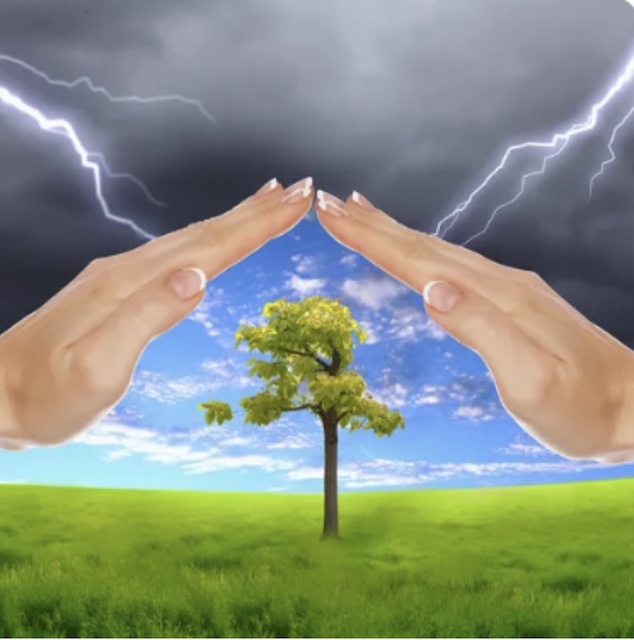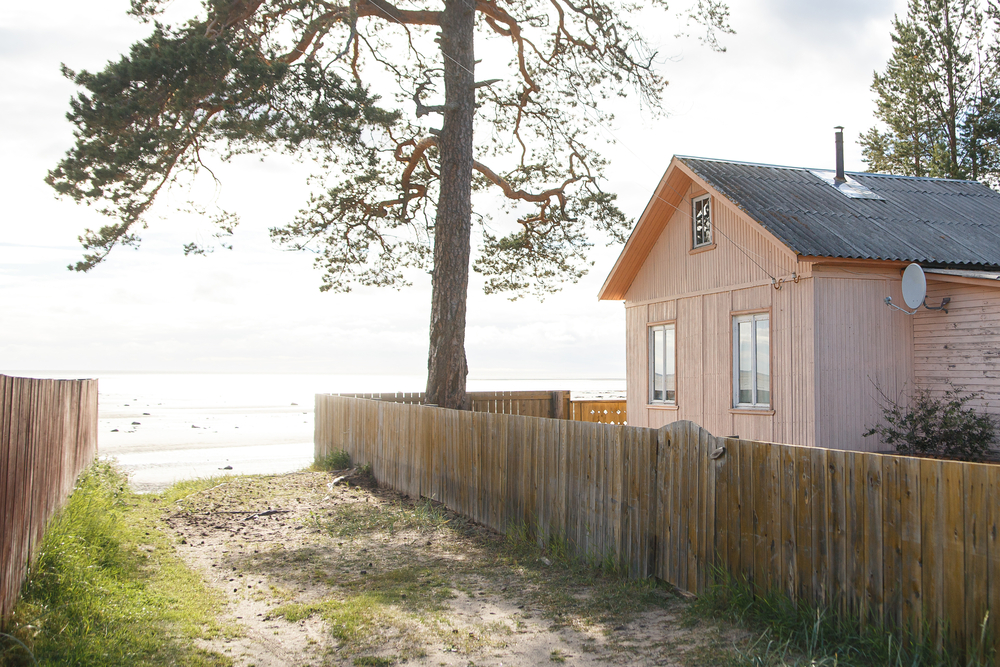
Do trees really need lightning protection? It hardly makes sense to protect a forest. Forest trees have been exposed to lightning strikes for many million years. Forest fires due to storms are not just a natural disaster but also a natural vegetation renewal process. A new forest grows in the place of an old one, and old wood is a great fertilizer.
A man's wish to protect himself and his buildings against accident lightning strikes to a tree and subsequent fire is also natural. The option of using high plants as lightning arresters is also common; it is used to protect house or another building. Another option is when the tree is protected for some reason. Let's discuss them in more details.
1. Using a tree as a lightning arrester
The discussion of this solution is present in item 2.30 of the lightning protection standard RD 34.21.122-87 (hereinafter referred to as RD 34), and is described there as a simplified one. It states: if, at a distance 3-10 m from the building, trees 2 or more times higher than the building are present, a current collector should be laid along the tree trunk, with the top being located above the treetop for at least 0.2 m. At the bottom, the current collector should be connected to a grounding arrangement. The current collector should take the lightning strike and drain it to the ground safely. With this, the tree itself and the protected structure should remain undamaged.
It seems that the activities are clearly described in the standard. However, after reading the standard, several questions appear. First, the tree grows, so the current collector should be laid with some margin, otherwise it can be damaged. How can this be implemented? Probably it's worth laying current collectors between holders with some degree of freedom. The wire current collector with diameter 8 mm regulated by the lightning protection standards is rather rigid, whatever material it is made of; therefore, it is hard to lay down the wire with margin. Standard RD 34 does not describe this moment.
Second, how to attach the current collector to the trunk? The method of securing using holders with self-tapping screws should be excluded as the one contradicting environmental aspects. Clamp holders can be used, but it is hard to find holders with a diameter corresponding to a large diameter trunk, the more so with a special clamp for a current collector. If you can buy such holder, it is preferred that it can be stretched along with the trunk diameter increase. The current collector should be secured in a clamp but such that it would remain movable when the tree grows. In order for the wire to be secured on the trunk, it can be rigidly secured only in several upper clamps.

The third problem can be its difficult installation. You cannot secure current collectors on trees of any height without a steeplejack equipment or without using a lifting work platform. The involvement of such specialists and equipment make the installation process expensive.
The easiest option when installing lightning protection on a tree is to provide grounding. It will not differ from the grounding arrangement of a standalone lightning arrester for the Category III lightning protection according to RD 34. It is sufficient to arrange, from the trunk, two current flowing paths from the 5 m horizontal electrode, and install two 3 m vertical electrodes on the edges.
After the described challenges, let's go to the edge of the rational. Surely, it's not worth making lightning arresters from each tree if a house is located in a forest and is surrounded by vegetation. This would have been irrational and insensible. In this case, you should use other fire safety measures, probably as firewalls or fire protection systems. Another point is when two or three pines or birches grow around the house, and there is a fear that the lightning strikes it.
You cannot say that the lightning protection method using a tree is unrealistic or impractical. It can be implemented and it even looks operational. The question is whether the wish to implement over-weighs the associated challenges, and whether the budget allows this.
2. Lightning protection of the tree
Lightning protection of the trees is not discussed in any regulatory documents; however, there are people who wish to do this. There are evidence that the lightning chooses higher objects as their targets more often than other. If this really happens and the tree is located in, e.g. parks or crowded places, then the wish to protect them from the lightning strike effects is justified. The bad point is that even if you provide the tree with the lightning protection and grounding system, this will not protect people from the step voltage. The only way to prevent this is to avoid reaching trees during the storm.
We can only count on that the tree lightning protection would be useful for it. Mechanical damage happens due to the fact that the lightning current looks for the ground path in the trunk. This is a problem because the tree is a poor conductor, which causes heating. The current passing process somewhat simplifies the bark humidity during rains as well as the liquid contained in wood. Depending on what path will be chosen by the lightning current, trunk destruction and fire may happen. In case of current collector laying, the major part of the current should go along it and then flow from the grounding arrangement to the soil. In theory, the tree will remain intact.
Lightning protection activities will not differ from the ones described in the first item, when the tree is used as a lightning arrester. Recommendations are the same: lay down the current collector so that it would not damage the trunk, use gentle holders in the form of clamps, arrange a wire margin to take into account the tree growth.
Conclusion
The article discusses that the lightning protection using a tree as well as the tree itself are feasible and rational solutions but they are neither perfect nor simple. We can only recommend assessing all pros and cons, and if you are not afraid of the challenges, provide lightning protection on a tree without damaging it.
Related Articles:



